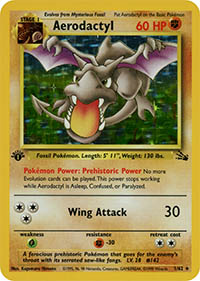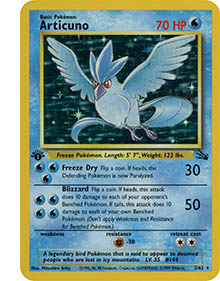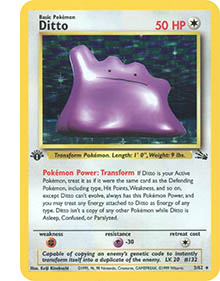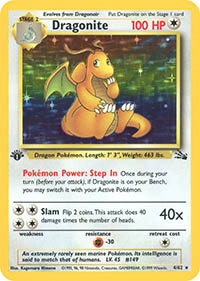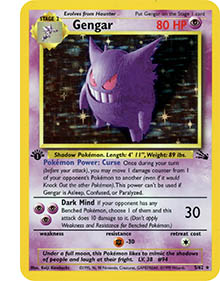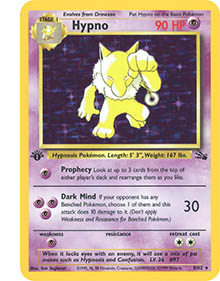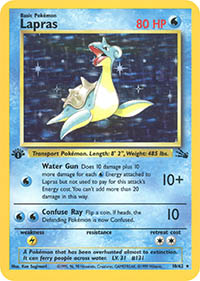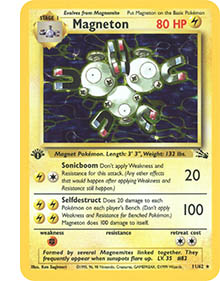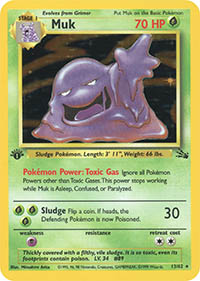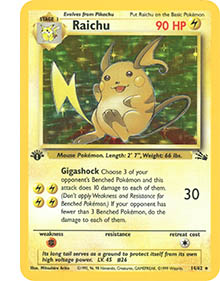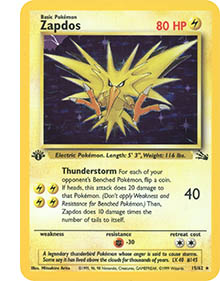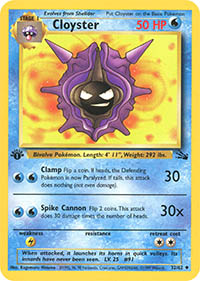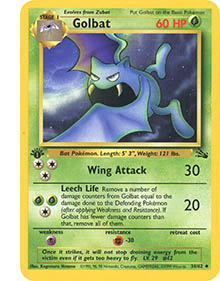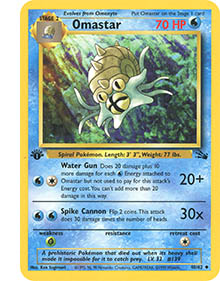Under a full moon, this Pokémon likes to mimic the shadows of people and laugh at their fright
Pokémon Fossil
By the time Satoshi Tajiri was 18 it was clear that he was a disappointment to his parents. He spent his childhood collecting insects and his adolescence in video arcades. He had become an otaku – an outcast from Japanese society. His father hoped that he would become an electrical engineer or at the very least an electrical repairman but instead he and his friend Ken Sugimori began Game Freak – a fanzine that published video game cheat codes.
Tajiri did eventually go to technical school to learn some programming and after seeing Nintendo’s new Game Boy and its link cable he and Sugimori began developing a role-playing game that combined his childhood interests in bug collecting, manga, Ultraman and Gashapon capsules. It took six years and all of his money to finish the game he called Capsule Monsters. Nintendo, which didn’t know what to make of Tajiri’s game renamed it Pocket Monsters, or as you probably know it – Pokémon.
When released in early 1996 Pocket Monsters single-handedly revived the Game Boy. Nintendo America launched the games in the US in September 1998 and if anything they became even more popular here; as Tajiri said “Americans actually understood the concept better than the Japanese.” By 1999 Pokémon was virtually inescapable – there were video games, a TV series, a movie, a card game and a licensed version of pretty much everything else. It had become a cultural/merchandising phenomena. It was even a cover story in Time. To fully appreciate how big this Pokémon thing was you really needed to have had a 10-yo boy around at the time. Turns out I had Andy.
Like most 10-yo boys Andy didn’t really have interests, he had obsessions. He had been into anime and manga for as long as I can remember and it didn’t take much for him to become instantly obsessed with Pokémon. For the first time in his life he diligently came home right after school to watch the TV show. He and his friends spent afternoons hunched over linked-up Game Boys. But more than anything else was that card game.
The Pokémon Trading Card Game was published by Media Factory in 1996 using Magic: The Gathering as a template. The more useful the card, the scarcer it was with the most desirable being the holigraphic foil cards. The idea – obviously – was to get kids to buy as many packs of cards as possible. The base set was released in the US in December 1998 and the Jungle expansion set six months later.
By 1999 the cards were being traded by kids to the point of distraction at school and soon they became a staple of the card and comic shops. It had became a bubble economy where the rarest cards were being offered for just stupid amounts of money. Andy got plenty of three USD packs but never any 100 USD Charazards or 50 USD Blastoises.
I don’t remember why I was in a Toys “R” Us that particular day in October (probably this), but behind the checkout counter they had the brand-new 1st edition Fossil cards. I bought as many packs as I was allowed then I came up with an idea. I enlisted my family and friends to go out to TRU that very minute to buy as many packs as they could and with the help of a shady guy at one of the pop-up weekend Pokémon booths at the flea market and one or two cards from Ebay I eventually pieced together a complete set, which mercifully was the smallest to date with only 62 cards. I had the Christmas of 1999 pretty much nailed. It’s a good thing I did it then because come that December you couldn’t find a retail pack of Fossil cards to save your life.
After Andy got the cards on Christmas morning he was thrilled. I remember giving him a Dad-like admonishment to keep them together as a set and treat them gently but Andy wasn’t a collector, he was a gamer. To him the point of the cards was not to display them in loose-leaf binders but to build decks that could win games. I was sure that as soon as I turned my back the carefully pieced-together Christmas Fossil set was absorbed into his shoe-box collective.
The Pokémon craze had pretty much run its course by 2000, being replaced by the next pre-teen (or in my house, a wife’s) obsession – Harry Potter. Andy, however, continued to play the game for at least a few more years, even convincing mom to take him to Saturday afternoon tournaments at the local mall (where, honestly, he acquitted himself rather well). Pokémon turned out to be the gateway drug; it was followed by Magic, Dungeon & Dragons and, after his friend’s Dad opened a local game store, more games than I can possibly catalog.
Maybe it’s fitting then that on that specific October night Andy and his friends had a Mountain Dew-fueled gaming session on the dining room table. I remember them being just so hyper-caffeinated, so loud, so very annoying. Then I remember waking up to the phone call and later, in the middle of the night, meeting a chaplain then sitting in a hospital conference room an hour away from home listening to a doctor say “I am afraid that I have no good news to tell you.”
It’s easy to imagine the past as better – more happy – than it really was and as Theodore Daryrimple recently wrote “It is a stage of life that comes to us all, and sooner than any of us thinks.” For me it started that night.
Sometime later I was going through Andy’s stuff, determined not to let his room become a static museum exhibit and nearly everything I picked up reminded me of a specfic time and place. Not Christmases and birthdays, but events that were completely ordinary at the time – like October trips to the toy store. They all now held some special significance.
When I came upon Andy’s box of Pokémon there were hundreds of loose cards, some in plastic sleeves, most not. There were heavily played rubber-banded decks and there was the folder with the Fossil set. Andy had never touched it – it was exactly the same as it was that Christmas morning in 1999.
It’s been more than a few years now, but I still wonder why he never used them.
13 Oct 2013, updated 2 Nov 2014 ‧ Design

